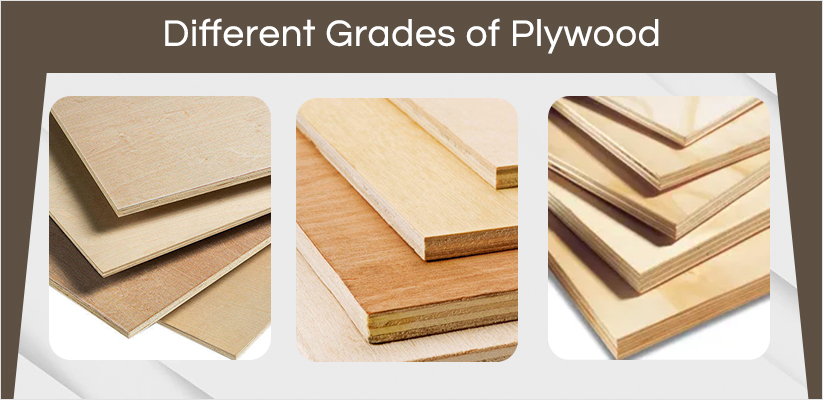In the case of softwood plywood, each veneer contains two grades, one for the “face” veneer and the other for the “back” veneer. There are four grades of plywood veneer: A, B, C, and D.
A-grade plywood is the highest quality. While it will cost more, the time savings can be worth it for projects that will be visible to the eye. This type of plywood is smooth and easy to paint.
B-grade plywood usually has minor flaws that may require small repairs. It is slightly less smooth.
C-grade ply has more visible flaws and knots up to 1.5 inches in diameter.
D-grade plywood can have large flaws and knots up to 2.5 inches in diameter. This is typically the cheapest grade of plywood veneer.
The first letter refers to the grade of the face of the ply, and the second letter refers to the back. Therefore, “AB” plywood would have an A-grade face veneer and a B-grade back sheet.
Grades of Plywood: Hardwood
The grading system for hardwood plywood is a little different. Like softwood, the face veneer is represented by letters, and A is the highest quality and D is the lowest quality. However, there is a different standard for backs: 1 is the best and 4 is the worst.
A1 hardwood plywood represents the top quality plywood, and D4 the lowest quality (but most cost-effective) plywood.
Which Grade Of Plywood Is Right For My Project?
That depends on your project. If both sides of the plywood will be visible, A1, A2, B1, or B2 are acceptable choices. If the back will not show, A4 or B4 will be a suitable alternative.
Planning to use plywood for an outdoor project such as a deck, roofing material, or shed? You will want to make sure the material is resistant to moisture. If the plywood has an X at the end, this means it can withstand some exposure to moisture.


